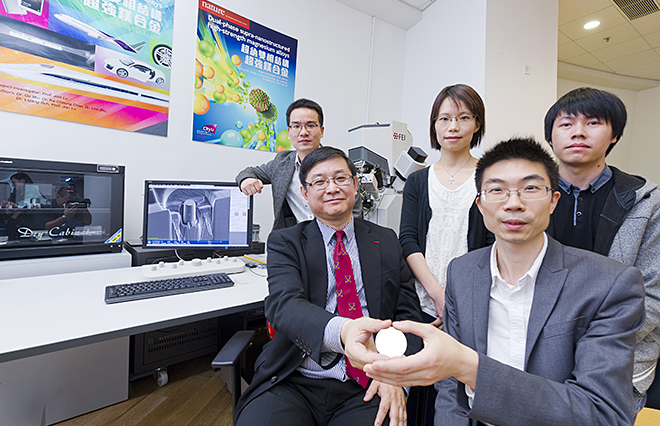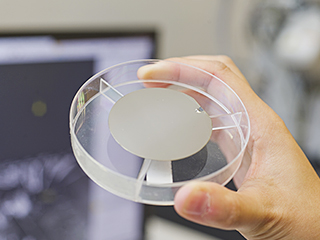A research team at City University of Hong Kong (CityU) has achieved a ground-breaking advancement in materials research by successfully developing the first-ever supra-nano magnesium alloy.
The new advanced material is 10 times stronger than conventional crystalline magnesium alloy and has super-deformation capacity two times higher than that of magnesium-based metallic glass. Also, it can be developed into biodegradable materials that can be implanted in the human body.
The innovation has been published in top academic journal Nature.
The discovery exemplifies CityU’s outstanding research strengths, as all the team members are from CityU, including the principle investigator Professor Lu Jian, Vice-President (Research and Technology) and Chair Professor of Mechanical Engineering, and other group members supervised by Professor Lu: Dr Wu Ge, Postdoctoral Fellow; Dr Chan Ka-cheung, Assistant Scientific Officer; Dr Zhu Linli, Research Fellow and Associate Professor at Zhejiang University; and Dr Sun Ligang, Senior Research Associate.
Professor Lu’s group is working hard on developing structural and functional materials with high strength and high ductility to overcome the limitations of existing materials. In the past five years, the team successfully developed the supra-nano-dual-phase glass-crystal alloy film structure. This material has a dual phase structure smaller than 10nm, which the research group named supra-nano-dual-phase glass-crystal (SNDP-GC). Supra-nano means that the size of each phase is less than 10nm, and glass is in the general amorphous phase. This is a new family of alloy structures – a world first.
Professor Lu said that it is possible to apply the new alloy in biodegradable implants. “This SNDP-GC has plenty of potential applications,” he explained. “For example, magnesium (Mg) alloys are newly developed biodegradable materials. The Mg-based SNDP-GC deposited Mg alloy could be used as a new prototype for biodegradable implants with excellent wear resistance. Patients would not have to undergo further surgery to remove the parts.” As magnesium is an element that is good for human health, it could also aid recovery.
Furthermore, it could be used as a coating material for artificial joints for knees and hips. It has excellent wear and corrosion resistance, and may also reduce the risk of allergic reactions to metallic joints. In addition, the new alloy can be used to extend the life of different micro-electro-mechanical systems (MEMS) and smart phones.
The low-density property of magnesium alloy has made it a desirable lightweight material for consumer electronics, such as smart phones, tablets and laptops, as well as aerospace and automotive products. However, scientists have been working hard over the years to improve its strength and wear resistance. CityU’s newly invented alloy can be a good substitute, as it can sustain pressure of more than 300 kilogramme force per square millimetre and has super-high wear-resistance.
Professor Lu explained that the new alloy was produced using a special magnetron-sputtering technology, and its strength was enhanced by modifying the volume proportion of the crystalline phase and amorphous phase in the material. The successful fabrication of the SNDP-GC material has proved that a novel structure can be created by carefully controlling the fabrication technique, which paves the way for developing other supra-nanostructured materials with special physical and chemical properties.
Professor Lu said he was delighted that the achievement had received international recognition, given the hard work of all his CityU colleagues over the years.

